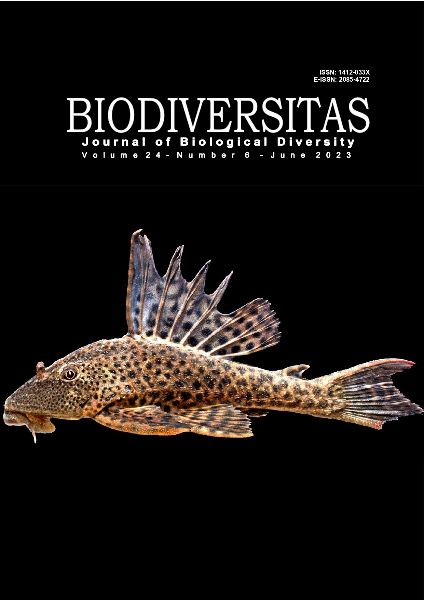Symbiotic propagation of Dendrobium bigibbum Lindl. with selected saprophytic Basidiomycota
##plugins.themes.bootstrap3.article.main##
Abstract
Abstract. Bautista NS, Valentino MJG. 2023. Symbiotic propagation of Dendrobium bigibbum Lindl. with selected saprophytic Basidiomycota. Biodiversitas 24: 3519-3527. Compatible mycorrhizal association of orchids with fungi is required for the germination and seedling development. In the present study, the mycorrhizal association of Dendrobium bigibbum with three species of saprophytic Basidiomycota, in particular, Volvariella volvacea, Lentinus tigrinus, and Pleurotus florida were evaluated. Co-culture technique was carried out during rhizoid and seedling development of D. bigibbum. Results revealed that the growth of D. bigibbum in rhizoid and seedling stages was enhanced when symbiotically grown with V. volvacea and L. tigrinus. D. bigibbum grown with V. volvacea had the highest mean length of the 1st leaf during the rhizoid stage. In seedling stage, V. volvacea and L. tigrinus significantly increased the growth of D. bigibbum in terms of length of 2nd leaf and fresh weight of the seedlings. For the length of root, increase in mean length was observed only in D. bigibbum co-cultured with L. tigrinus. In addition, the presence of peloton colonization was observed both in rhizoid and seedling stages. Thus, both V. volvacea and L. tigrinus formed compatible mycorrhizal association with D. bigibbum.

